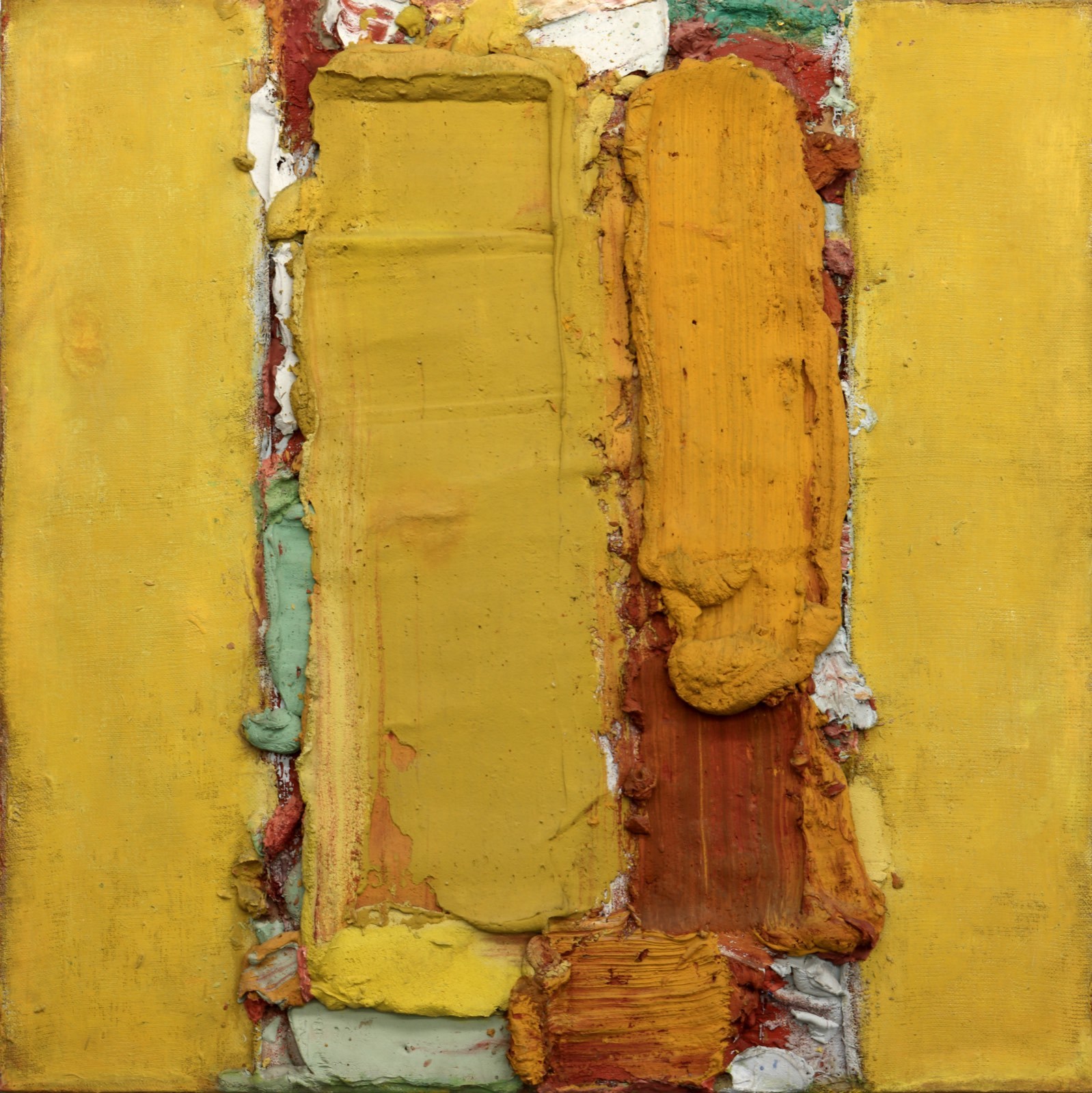Bram Bogart
Whilst unmistakably a child of his time, Bram Bogart occupies an idiosyncratic position within the history of post-war European painting. He developed an artistic vocation at a time when modernism was firmly established in the artistic world, a period in which new art movements followed one another in quick succession. Bogart’s monumental paintings, on which he often daubed thick, fistfuls of paint, were frequently classified by contemporaneous critics as ‘matter paintings’, a style associated with artists such as Antoni Tapiès, Jean Dubuffet, Jean Fautrier and Alberto Burri. Bogart always resisted such narrow categorisations, however. He considered himself “primarily and above all a painter” and felt that “painting and only painting” was his metier. Bogart also stated that his work had little affinity with the CoBrA movement, with which his early Abstract Expressionist works were associated. He felt that CoBrA had “no interest in composition or painterly technique.”
Bogart initially trained as a house painter. As an artist, he was an autodidact. He taught himself to draw via a correspondence course, which he took at a young age. As early as 1940, Bogart developed a style in which the rich use of paint helped support his solidly constructed forms and compositions, as evidenced by his early still lifes and landscapes. Bogart’s entire oeuvre is permeated by the unending quest for tension between composition, organisation, the material of paint and the painterly gesture. The artist moved frequently, such as to Paris in 1946, where he took drawing and painting classes at the Académie Grand Chaumière. While there, he attended private views and was soon a fixture on the art scene.
He moved to the South of France in 1947, where his work underwent a significant stylistic change. In the archetypal, graphic and geometric forms of a large collection of ethnographic artefacts, Bogart saw a synthesis between free expression and absolute precision. This insight ushered in a period of radical abstraction: geometric signs such as triangles, diamonds and squares started to emerge in the thick layers of paint. Signs henceforth became a permanent feature in Bogart’s oeuvre. In 1988, he claimed: “Everything in nature can be reduced to a sign, the rectangle, the square, the cross and the circle. These shapes have always played a role in the evolution of my work.”
Bogart returned to Paris in the early 1950s, when the art world was split between controlled geometric abstraction and unrestrained Abstract Expressionism. Bogart resolutely aligned himself with the latter camp. His signs became less geometric in the 1950s and were rendered as expressive, almost calligraphic flourishes in thickly applied earth-toned pigments. Bogart settled in Belgium in 1961 (first in Brussels, shortly afterwards in the town of Ohain in Wallonia). This move also triggered a radical stylistic change. Bogart reverted to his knowledge of materials from his time as a house painter. He started working on increasingly large, impasto works on thick panels which he painted flat on the ground using trowels. As part of the process, he mixed kilos of colour pigments with the kinds of additives and thinners used in oil and watercolour painting. This led to Bogart’s trademark: sculptural paintings with thick, unctuous layers of pigment that are smeared upon the canvas with a keen eye for rhythm, structure, surface, space and movement.
Although he would maintain this style, his work underwent several minor changes, mainly influenced by his personal life. In the 1970s and 1980s, for example, he used brighter colours inspired by the toys of his then young children. Although Bogart was always something of a loner in relation to the art world – he regularly moved to rural locations – he retained a sharp frame of reference when it came to his activities as a painter. By his own admission, he always surrounded himself with his own early works, which not only allowed him to maintain an overview but to also evolve his style “intuitively”. These tactics – dogged persistence and a lone wolf mentality – are the pillars of Bogart’s highly relevant contribution to post-war abstraction.














